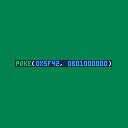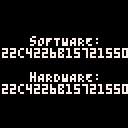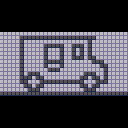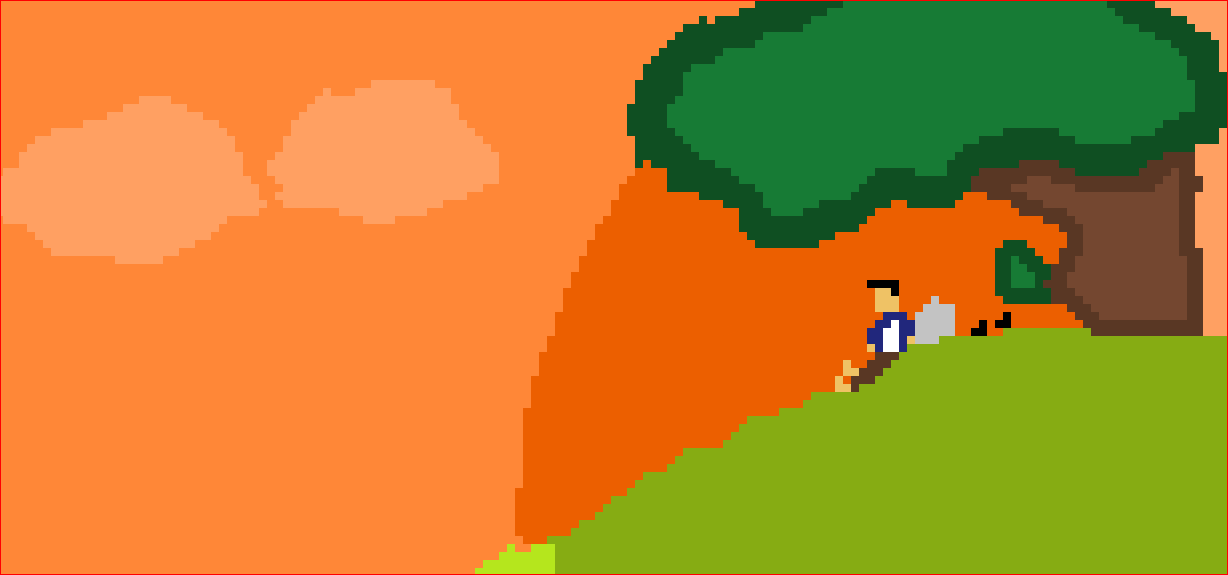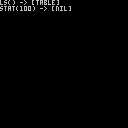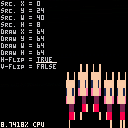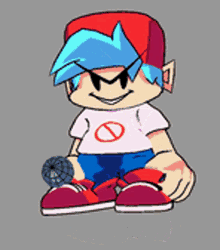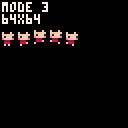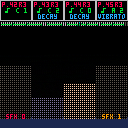If you don't know: The Emergency Alert System (EAS) is a warning system in the United States that interrupts TV and radio programming in order to provide important information on events that pose danger to your life. This cartridge replicates the intimidating tones from the system using the secret PCM channel in PICO-8.
Note that the National Periodic Test here is completely fake. There's no voice announcement included for now, due to concerns about hitting the limited storage capacity of PICO-8 carts.
WARNING: Never broadcast the EAS header bursts on TV or radio! The FCC will have the right to fine anyone for such misuse of EAS/SAME tones.

What is this cartridge?
This is an example of how the bitcrush/distortion flags (found at poke location 0x5F42) can be utilized. The triangle waveform in PICO-8 can be made to sound more like the NES's triangle wave channel, but not exactly the same as it.
Technical bits
Generally, all digital sound data is not accurate. They are limited by some factors. One of those factors is "amplitude".
The primary way to store audio digitally is with Pulse-Code Modulation (PCM), where an analog audio signal is repeatedly sampled at a certain time interval, and each analog sample is quantized to a limited range of digital values.

Officially, the 0x5F00 to 0x5F3F area is referred to as "Draw State" RAM, and 0x5F40 to 0x5F7F is referred to as "Hardware State" RAM.
However, I think this is quite misleading, considering Draw State RAM offers some non-related functionality like controlling Devkit Mode, muting audio, and suppressing the pause menu. Furthermore, there are some graphics-related addresses in Hardware State RAM, notably for: the default print() attributes, the bitplane read/write masks, the undocumented high-color stuff, and the "Palette 2" shared between the recent fill pattern functionality and high-color modes.
I'd suggest both 64-byte areas be merged into a single 128-byte "Hardware Variables" area.

EDIT: This has been resolved by Zep.
As the title says, the "code snippet within a line" markdown on the BBS doesn't properly respond to the end marker, and instead runs down to the end of the whole line.
Assume the following raw text:
This is a `code snippet` within a line! |
This should be expected (italics used to represent the text within the backticks):
This is a code snippet within a line!
But the observed result is:
This is a code snippet within a line!


Hey @zep!
Can you please add a feature to PICO-8's WAV export function, so that each of the four channels have one WAV file each? I've been wanting to do oscilloscope views of PICO-8 chiptune music, but the "oscilloscope view" format requires one WAV file for each channel (so that each channel is seen as a separate waveform).
I've already mentioned you on Twitter about this, but you never replied:
https://twitter.com/StinkerB06/status/1182348172548399104
https://twitter.com/StinkerB06/status/1174923908128002048



This thread is intended for the sake of researching particular (and most likely undocumented) parts of PICO-8's STAT(), that @zep didn't reference in the PICO-8 manual. The cartridge above also shows a new way for PICO-8 game devs to read the root-folder cartridge list with LS() (you must be on the desktop PICO-8 and your root directory must have at least 1 cartridge).
If you, Zep, know anything about the STAT() numbers not seen in the manual, can you tell me what they are for? People have figured out these for the BBS 101~104:
- STAT(101) -> BBS ID (nil for local carts)
- STAT(102) -> Site name (blank string in exported HTML's, nil in desktop PICO-8 builds and exported binaries)
This cartridge is intended for PICO-8 newcomers to learn how each mode works.
Use the arrows to change the video mode. Valid modes are 0~7.
It writes to the address 0x5F2C in Draw State RAM to set the video mode (display resolution or reflection).
The sprites used here are Jelpi sprites!
WARNING: Depending on what you watch and listen to with this visualizer, the bars can produce flickering effects on your screen, which may be a problem for those diagnosed with epilepsy. Better use with caution.
About
This is a heavily-modded variant of Music Visualizer Bars by iaoth. Credits go to him for his visualizer code base!
I can load() this cart. Is there anything special about doing that?
Yes! By a cart passing a load parameter string to PicoVisualizer, that cart can serve as a custom menu that allows users to view the visualization of any of its tracks, but this has the cost of relying on an internet connection.










 1 comment
1 comment
